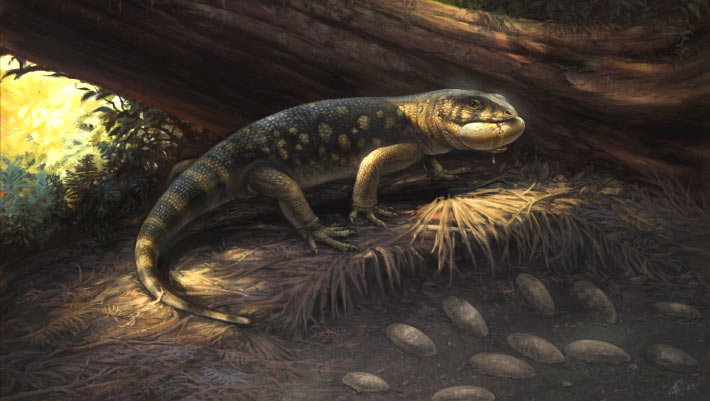Astronomers using the Multi Unit Spectroscopic Explorer (MUSE) instrument on ESO’s Very Large Telescope (VLT) have observed the active starburst (star-forming) galaxy NGC 253 in thousands of colors simultaneously.
This VLT/MUSE image shows a detailed, thousand-color image of NGC 253. Image credit: ESO / Congiu et al.
NGC 253 is located approximately 11.5 million light-years away in the constellation of Sculptor.
Otherwise known as the Silver Coin, Silver Dollar Galaxy or Sculptor Galaxy, the galaxy was discovered on September 23, 1783 by Caroline Herschel (sister of William Herschel).
The galaxy is the brightest member of the Sculptor Group of galaxies.
It is considered a starburst galaxy, where stars form and explode at an unusually high rate.
“NGC 253 is one of the closest massive star-forming galaxies to the Milky Way,” said ESO astronomer Enrico Congiu and his colleagues.
“It is also one of the largest galaxies in the sky, with an apparent size of 42 x 12 arcmin2.”
“With its prominent stellar bar, well-defined spiral arms, and star formation spread across the disk, NGC 253 represents a nearby, archetypal example of a main-sequence spiral galaxy.”
To create the new image of the galaxy, the astronomers observed it for over 50 hours with the MUSE instrument on VLT.
They had to stitch together over 100 exposures to cover an area of the galaxy about 65,000 light-years wide.
“We can zoom in to study individual regions where stars form at nearly the scale of individual stars, but we can also zoom out to study the galaxy as a whole,” said Dr. Kathryn Kreckel, an astronomer at Heidelberg University.
In their first analysis of the data, the researchers uncovered around 500 planetary nebulae, regions of gas and dust cast off from dying Sun-like stars, in NGC 253.
“Beyond our galactic neighborhood, we usually deal with fewer than 100 detections per galaxy,” said Fabian Scheuermann, a doctoral student at Heidelberg University.
“Because of the properties of planetary nebulae, they can be used as distance markers to their host galaxies.”
“Finding the planetary nebulae allows us to verify the distance to the galaxy — a critical piece of information on which the rest of the studies of the galaxy depend,” said Ohio State University’s Professor Adam Leroy.
“Future projects using the map will explore how gas flows, changes its composition, and forms stars all across this galaxy.”
“How such small processes can have such a big impact on a galaxy whose entire size is thousands of times bigger is still a mystery,” Dr. Congiu said.
The results will be published in the journal Astronomy & Astrophysics.
_____
E. Congiu et al. 2025. The MUSE view of the Sculptor galaxy: survey overview and the planetary nebulae luminosity function. A&A, in press;

























